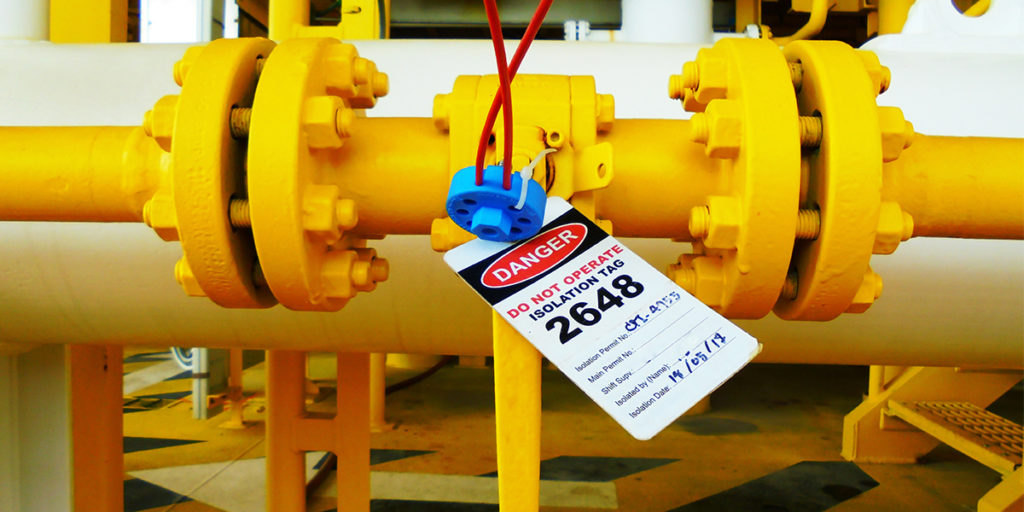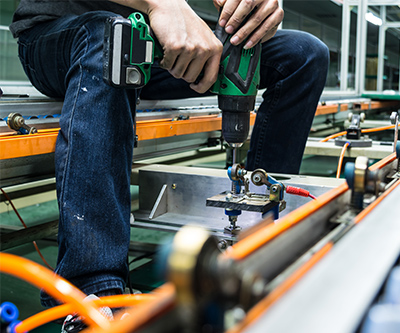Controlling Hazardous Energy, Lockout Tag Out (LOTO)
Posted: Nov. 19, 2019 • By Kevin Kohler

What is Lockout Tag Out?
LOTO is one common method for isolating workers from sources of hazardous energy, often when maintenance or repair work is to be performed.
Lockout is defined in Canadian standard CSA Z460-13 as:
“placement of a lockout device on an energy-isolating device in accordance with an established procedure.”
A lockout device is normally an individually keyed lock that secures an energy-isolating device, such as a switch or a valve. The normal standard is for one individual lock for each person exposed to the hazard along with written procedures on lock placement and removal specific to the situation.
Tag out refers to the (often standardized) information tags that are to be used with the lockout procedure.
Is it all that complicated to protect workers from hazardous energy?

It can be. Consider the following NIOSH investigative report cited in “Workplace Solutions” (April 2011):
“The teeth on the debarker feed rolls had become worn, and the worker had been assigned to (repair them). He had not conducted this type of repair before.
To safely de-energize this machine, six electrical sources and one pneumatic energy source needed to be disconnected and locked out, and the pressure in the air line that automatically controls the up and down motion of the feed rolls needed to be bled off. The victim …. did not disconnect and lock out the other four electrical sources or the pneumatic energy source, and he did not bleed off the pressure in the air lines. In this condition, the machine’s automatic control system remained energized…. the victim …. leaned forward and placed his head between the feed rolls to reach areas that required more metal. The feed rolls automatically cycled, and closed over his head.”
The millwright performing the work died. He had only received general LOTO training that did not address the more complex energy isolation procedures that would have been required to safely carry out this work.
What sources of hazardous energy must be controlled?
All energy sources that can harm a worker must be isolated or reduced to a zero energy state, such as the need to bleed air pressure in previous and tragic example. Some common sources of hazardous energy include:
- Electrical
- Mechanical (springs or other items under tension)
- Hydraulic (moving or pressurized liquids)
- Pneumatic (compressed gases)
- Thermal
- Gravitational (potential energy allowing loads to fall, slide, roll or shift)
- Chemical (energy released from reactions)
How must I protect workers from hazardous energy?

LOTO is a common legislated requirement to isolate hazardous energy such as electrical energy or electrically powered devices. Additional methods of hazardous energy control may be required depending upon the energy source. In all cases we must either safely isolate the energy source or reduce the energy to a zero state and verify that the hazardous energy has been, and will remain, controlled, during the work or exposure.
While provincial, state and federal safety regulations for control of hazardous energy (including LOTO) must be followed, it’s important to remember that they do not address each specific situation. Detailed hazard assessments and risk analyses must be performed by qualified people, knowledgeable in the equipment or process to be isolated.
Best Practices
Hazardous energy control procedures must be:
- Specific to the situation, equipment or process
- Established by competent persons including those who normally perform the work
- Include verification checks that energy sources are isolated
Workers must:
- Receive training on and have access to the specific energy control procedures
- Be supervised by a competent person.
Failure to control hazardous energy can have dire consequences and is a key component of all safety systems.
Related Articles

Modified Work Programs
Should you stay home until you can perform your job after a work injury? No, it’s quite the opposite, as […]
Read Article
Commercial Transportation Safety
The Humboldt tragedy – The large risks present in commercial trucking The court’s description (Global News report, Jan 28, 2019) […]
Read Article